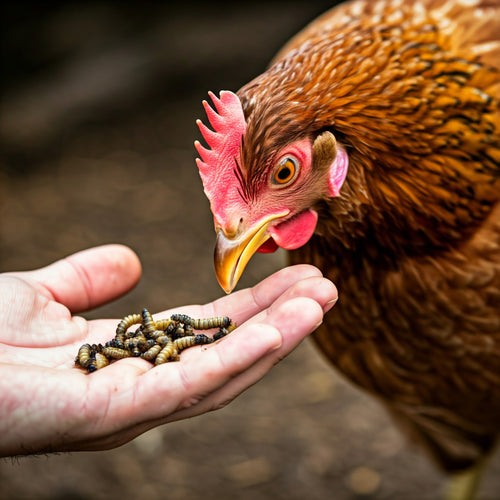
How Much Dried Black Soldier Fly Larvae Should You Feed Your Chickens?
Share
A Nutritious Treat for Your Flock
Dried black soldier fly larvae (BSFL) are a fantastic addition to your chicken's diet. Packed with protein, calcium, and other essential nutrients, these larvae will help your flock thrive. But how much should you feed them? Let's dive into the details.
The Benefits of BSFL
- High Protein Content: BSFL are a great source of protein, essential for muscle growth and overall health.
- Rich in Calcium: Calcium is crucial for strong bones and eggshells.
- Improved Digestion: BSFL can aid in digestion and nutrient absorption.
- Natural De-worming: Some studies suggest that BSFL may help with natural deworming.
How Much to Feed
While BSFL can be a significant part of your chicken's diet, it's important to introduce them gradually. Start by offering a small amount, such as a tablespoon per chicken, by hand each feeding, for the first week. This will also help associate the BSFL to your bird as a high value reward.
As your chickens adjust, you can gradually increase the amount. A general guideline is to feed 10-30% of their total feed as BSFL. Additionally, you can replace any oyster shells used as a calcium supplement with BSFL – the larvae are rich in Calcium!
Important Considerations
- Fresh Water: Always ensure your chickens have access to fresh water, especially when feeding them protein-rich foods like BSFL.
- Monitor Your Flock: Keep an eye on your chickens' weight and overall health. If you notice any changes, adjust their diet accordingly.
- Balance is Key: While BSFL are highly nutritious, it's essential to maintain a balanced diet. Offer a variety of feeds, including commercial layer feed, scratch grains, and fresh greens.
By incorporating dried black soldier fly larvae into your chicken's diet, you can provide them with a natural and nutritious boost. Remember, moderation is key, so start slowly and monitor your flock's response.
To receive updates from Egg Brigade with the latest trends, expert insights, actionable tips and more, sign up to our newsletter below.